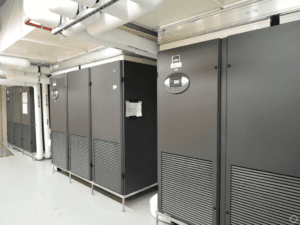Energy efficiency is not just a buzzword; it's the cornerstone of sustainable growth in today's fast-paced digital landscape. At EziBlank, we understand that optimising your energy usage is essential for enhancing performance while significantly reducing costs. Our innovative air-flow management systems, including our industry-leading blanking panels, provide seamless installation and impressive results. Join the growing number of businesses that are making smarter choices to safeguard their bottom line and the environment—discover how our solutions can revolutionise your operations today!
How Massive Data Centers Power ChatGPT and Google AI
In today's digital era, the sheer scale of data centres is mind-boggling, especially when considering the role they play in powering advanced AI systems like ChatGPT and Google AI. These massive facilities are the backbone of modern technology, ensuring that AI applications run seamlessly by managing and processing vast amounts of data at incredible speeds. As AI continues to evolve, the infrastructure supporting it must be robust, efficient, and sustainable. Understanding the significance of these data centres provides insight into the complex operations that keep our digital world running smoothly.
Read More
The Role of Blanking Panels in Energy Efficiency
Blanking panels may seem like a minor component within data centres, but their role in enhancing energy efficiency is substantial. By effectively sealing unused spaces in server racks, these panels prevent the mixing of hot and cold air, allowing cooling systems to operate more efficiently. This targeted airflow management reduces the overall energy consumption required to maintain optimal temperatures, leading to significant cost savings and a lower carbon footprint. Incorporating blanking panels into data centre infrastructure is a simple yet powerful step towards achieving greater energy efficiency and sustainability.
Read More
The Importance of Energy Efficiency in Data Centres
Energy efficiency is a crucial factor in the operation of data centres, as these facilities consume vast amounts of power to keep servers running and maintain optimal cooling conditions. Improving energy efficiency not only reduces operational costs but also lessens the environmental impact of data centres, aligning with global sustainability goals. Strategies such as implementing advanced cooling systems, utilising renewable energy sources, and optimising airflow management with tools like blanking panels are key to achieving higher energy efficiency. By focusing on these areas, data centres can enhance performance while contributing to a more sustainable future.
Read More
Everything you need to know about data center power
Power is the lifeblood of any data centre, underpinning the operation of servers, cooling systems, and networking equipment. Ensuring a reliable and continuous power supply is critical, as even a brief outage can lead to significant disruptions. Data centres typically rely on a combination of grid electricity, uninterruptible power supplies (UPS), and backup generators to maintain operations during power failures. Power distribution within the facility must be carefully managed to ensure that all equipment receives the necessary voltage and current, while also allowing for redundancy to prevent failures. Additionally, the efficiency of power usage is a key concern, with modern data centres adopting technologies like power usage effectiveness (PUE) metrics to optimise energy consumption and reduce costs. Understanding these aspects of data centre power is essential for maintaining high performance and reliability in a facility.
Read More
Cold Aisle Containment Solutions & Products
Cold aisle containment is a highly effective strategy for improving the efficiency and performance of data centre cooling systems. This approach involves physically separating the cold air used for cooling servers from the hot exhaust air, typically by enclosing the cold aisle where the server fronts are located. By preventing the mixing of hot and cold air, cold aisle containment ensures that cooling is more targeted and efficient, reducing energy consumption and lowering operational costs. Products designed for cold aisle containment, such as doors, ceiling panels, and blanking panels, help maintain a stable, cool environment within the aisle, allowing data centres to operate more efficiently and sustainably. This solution is particularly valuable in high-density environments where cooling demands are significant.
Read More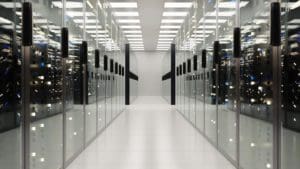
Hot Aisle vs Cold Aisle Containment
Hot aisle and cold aisle containment are two critical strategies used in data centres to enhance cooling efficiency and reduce energy consumption. In a cold aisle containment setup, cold air is contained within the aisle where the fronts of the server racks face each other, ensuring that only cool air is delivered directly to the equipment. This prevents the mixing of cold air with hot exhaust air, improving cooling efficiency. Conversely, hot aisle containment involves enclosing the aisle where the backs of the servers expel hot air. This containment captures and directs the hot air back to the cooling systems, preventing it from mixing with the cool air in the room. Both methods are effective, but the choice between hot and cold aisle containment depends on the specific design and cooling needs of the data centre. Implementing either strategy can lead to significant improvements in energy efficiency and overall system performance.
Read More
Hot Aisle Containment Solutions & Products
Hot aisle containment solutions typically include barriers, doors, and ceiling panels that effectively seal off the hot aisle, creating a controlled environment where the separation of hot and cold air is meticulously maintained. This separation ensures that hot exhaust air is directed away from the servers and into return air ducts, preventing it from mixing with the cool intake air and thereby enhancing the efficiency of the cooling system. Implementing these solutions not only significantly reduces energy consumption and lowers cooling costs but also enhances the overall performance, reliability, and lifespan of the data centre’s infrastructure, making it a vital strategy for modern data centres aiming to optimise their operations.
Read More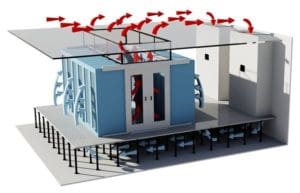
How to Manage Airflow in a Data Center
Managing airflow in a data centre is crucial for maintaining optimal cooling efficiency and ensuring the longevity of equipment. Effective airflow management begins with the strategic placement of blanking panels in server racks to eliminate gaps, which prevents hot air from recirculating and ensures that cool air is directed precisely where it’s needed. Implementing hot and cold aisle containment systems further enhances airflow by separating the hot exhaust air from the cool intake air, reducing the workload on cooling systems. Proper cable management is also essential to avoid obstructions that can disrupt airflow patterns. Additionally, using perforated floor tiles in the raised floor environment helps channel cool air directly to the servers. Regular monitoring and adjustments based on real-time data are necessary to maintain efficient airflow and adapt to changes in the data centre’s layout or load. These strategies collectively help optimise cooling, reduce energy consumption, and improve the overall performance of the data centre.
Read More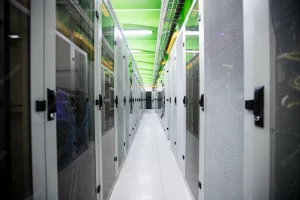
Blanking Panels: The Ultimate Guide
Blanking panels are a crucial yet often overlooked component in data centre management, playing a vital role in optimising airflow and enhancing energy efficiency. These panels are designed to fill the empty spaces in server racks, preventing the recirculation of hot air into the cold aisle, which can otherwise lead to hotspots and reduced cooling efficiency. By directing cool air precisely to where it’s needed and ensuring that hot air is properly expelled, blanking panels help maintain optimal operating temperatures, reduce the workload on cooling systems, and ultimately lower energy costs. Available in various sizes and materials, blanking panels are easy to install and offer a cost-effective solution for improving data centre performance. Regular use and proper installation of blanking panels not only contribute to a more efficient and reliable data centre but also extend the lifespan of critical IT equipment.
Read More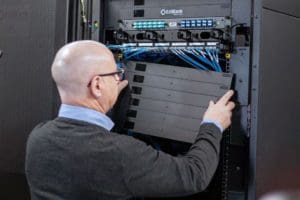
The Advantages of a Green Data Center
A green data centre offers numerous advantages, both for the environment and for the businesses that operate them. By prioritising energy efficiency and sustainability, green data centres significantly reduce their carbon footprint, contributing to environmental conservation and aligning with global efforts to combat climate change. These facilities often utilise renewable energy sources, such as solar or wind power, which not only cuts down on greenhouse gas emissions but also reduces reliance on traditional, non-renewable energy sources. Additionally, green data centres implement advanced cooling technologies and airflow management strategies, such as hot and cold aisle containment, to optimise energy use and lower operational costs. The financial benefits are substantial, as reduced energy consumption translates directly into cost savings over time. Furthermore, operating a green data centre can enhance a company’s reputation, demonstrating a commitment to sustainability that resonates with environmentally conscious customers and partners. Overall, the shift towards greener data centres is not only a responsible choice for the planet but also a strategic business decision.
Read More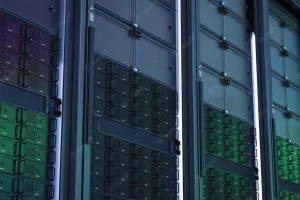
How to Reduce Energy Consumption in a Data Center
Reducing energy consumption in a data centre is essential for cutting operational costs and promoting sustainability. One of the most effective strategies involves optimising airflow management by using blanking panels to block unused rack spaces, which prevents hot air recirculation and ensures that cool air is directed where it’s needed. Implementing hot and cold aisle containment systems further enhances cooling efficiency by separating hot and cold air streams, reducing the energy required for cooling. Upgrading to energy-efficient hardware, such as low-power servers and storage devices, can also significantly lower energy consumption. Additionally, adopting advanced cooling technologies like liquid cooling or free cooling can drastically reduce the reliance on traditional air conditioning. Regular monitoring and analysis of power usage effectiveness (PUE) allow data centre managers to identify inefficiencies and make real-time adjustments to optimise energy use. These measures, when combined, can lead to substantial energy savings, lower operating costs, and a reduced environmental impact for the data centre.
Read More
What is Cold Aisle Containment
Cold aisle containment is a data centre cooling strategy designed to improve energy efficiency and optimise temperature control. In this setup, the cold aisle, where the fronts of the server racks are located, is enclosed to prevent the mixing of cold air with the hot exhaust air from the servers. This containment system ensures that the cool air from the air conditioning units is directed exclusively towards the servers' intake, maximising cooling efficiency. By containing the cold aisle, data centres can maintain lower temperatures with less energy, reducing the workload on cooling systems and lowering overall energy consumption. This approach not only improves the performance and reliability of the equipment but also contributes to significant cost savings and a more sustainable data centre operation. Cold aisle containment is particularly effective in high-density data centres where cooling demands are substantial.
Read MoreDefining and Being a Green Data Center
A green data centre is one that prioritises sustainability and energy efficiency in its design, operations, and maintenance, aiming to minimise its environmental impact while maintaining high performance. This is achieved through several key strategies, including the use of renewable energy sources such as solar or wind power to reduce reliance on fossil fuels. Energy-efficient hardware, advanced cooling techniques like free cooling or liquid cooling, and effective airflow management using hot and cold aisle containment are also integral to green data centres. These facilities often implement rigorous energy monitoring and management practices to optimise power usage effectiveness (PUE) and reduce waste. Being a green data centre means not only adopting these technologies and practices but also committing to ongoing improvements and innovations that further reduce environmental impact. This approach benefits both the planet and the bottom line, as reduced energy consumption translates to lower operational costs, and the commitment to sustainability can enhance a company’s reputation and appeal to environmentally conscious customers and partners.
Read MoreThe Complete Guide to Data Center Cooling
Effective data centre cooling is essential for maintaining the reliability and efficiency of IT infrastructure. Key strategies include optimising airflow through techniques like hot and cold aisle containment, which separates hot and cold air to enhance cooling efficiency. Blanking panels are used to fill unused rack spaces, preventing hot air recirculation and ensuring cool air reaches where it's needed most. Advanced technologies like liquid cooling, which circulates coolant directly to hot components, and free cooling, which utilises natural cold air or water, further reduce energy consumption. Real-time monitoring of temperature and humidity allows for precise control, ensuring optimal conditions while minimising energy use. Together, these approaches protect equipment, lower operational costs, and contribute to a more sustainable data centre.
Read MoreThe 411 on CRAC Units
Computer Room Air Conditioning (CRAC) units are essential components in data centre cooling systems, designed to maintain optimal temperature and humidity levels for sensitive IT equipment. These units work by drawing warm air from the data centre, cooling it, and then distributing the chilled air back into the room, ensuring that servers and other hardware operate within safe temperature ranges. CRAC units often feature precise controls to maintain consistent environmental conditions, which is crucial for preventing overheating and ensuring the longevity of equipment. Incorporating CRAC units into a data centre's cooling strategy, along with effective airflow management techniques like blanking panels and aisle containment, helps improve overall cooling efficiency and reduce energy consumption.
Read More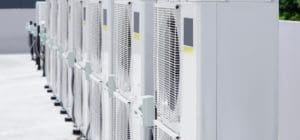
What is Hot Aisle Containment
Hot aisle containment is a cooling strategy used in data centres to improve energy efficiency by isolating the hot air generated by servers. In this setup, the hot aisle, where the backs of the servers expel warm air, is enclosed, preventing the hot air from mixing with the cool air in the rest of the data centre. This containment ensures that the hot air is directed straight to the cooling units, where it is removed or recycled, thereby reducing the workload on the cooling system. By maintaining a clear separation between hot and cold airflows, hot aisle containment helps to lower energy consumption, enhance cooling efficiency, and maintain optimal operating conditions for the servers, making it a crucial strategy for modern data centre management.
Read More
The Basics of Airflow Management
Airflow management is a fundamental aspect of data centre design that focuses on optimising the cooling process to ensure that IT equipment operates efficiently and reliably. The primary goal is to prevent the mixing of hot and cold air within the data centre, which can lead to hotspots and inefficient cooling. Key strategies include the use of blanking panels to seal off unused rack spaces, directing cool air to where it’s needed most and preventing hot air from recirculating. Additionally, hot and cold aisle containment systems are employed to physically separate the cold intake air from the hot exhaust air, further improving cooling efficiency. Effective airflow management reduces the energy required for cooling, lowers operational costs, and enhances the overall performance and lifespan of data centre equipment.
Read More
Profiling your data centre for greater efficiency
Profiling your data centre is a crucial process for understanding its current performance, identifying inefficiencies, and planning for future improvements. This involves a comprehensive analysis of various aspects of the data centre, including power usage, cooling effectiveness, airflow management, and overall infrastructure performance. By profiling, data centre managers can pinpoint areas where energy is being wasted, such as hot spots caused by poor airflow or overcooling. Tools like temperature sensors, power meters, and monitoring software are often used to collect data that provides insights into how well the data centre is operating. With this information, targeted strategies can be implemented, such as optimising airflow with blanking panels or adjusting cooling systems, to enhance energy efficiency, reduce costs, and improve the reliability and lifespan of the equipment. Profiling is an essential step in ensuring that a data centre operates at peak efficiency and is prepared to meet future demands.
Read More
High performance directional floor tiles for high density equipment racks
High-performance directional floor tiles are a critical component in data centre design, specifically engineered to optimise airflow and cooling efficiency. These tiles are strategically placed within raised floor systems to direct cool air from the underfloor plenum towards the server racks, ensuring that the air reaches the equipment that needs it most. By guiding airflow precisely, directional floor tiles help maintain consistent temperatures across the data centre, prevent hotspots, and reduce the workload on cooling systems. This leads to more efficient cooling, lower energy consumption, and improved overall performance of the data centre. Incorporating these tiles into a data centre's design is an effective way to enhance both energy efficiency and operational reliability.
Read More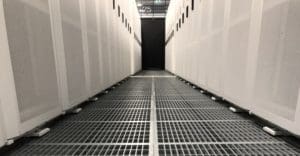
SRA Solutions recommend EziBlank for data centre air flow management
SRA Solutions recommends EziBlank® for data centre airflow management due to its effectiveness in optimising cooling efficiency and enhancing overall data centre performance. EziBlank® blanking panels are designed to fill unused rack spaces, preventing the recirculation of hot air and ensuring that cool air is directed precisely where it is needed. This targeted airflow management helps maintain optimal operating temperatures, reduces the strain on cooling systems, and lowers energy consumption. By incorporating EziBlank® panels, data centres can achieve significant improvements in cooling efficiency, operational reliability, and energy cost savings, making them a highly recommended solution by industry experts like SRA Solutions.
Read More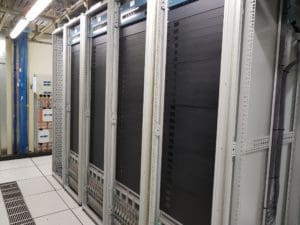
Know Your Data Centre Cooling
Understanding your data centre cooling system is essential for maintaining optimal performance and energy efficiency. Effective cooling strategies are crucial in preventing overheating, which can lead to equipment failure and costly downtime. Key aspects of data centre cooling include airflow management, where techniques like hot and cold aisle containment and the use of blanking panels help to direct cool air to the right places while preventing hot air recirculation. Additionally, advanced cooling technologies such as liquid cooling or free cooling can further enhance efficiency by reducing reliance on traditional air conditioning. Regular monitoring of temperature and humidity levels is also critical, allowing for real-time adjustments to maintain optimal conditions. By knowing and optimising your data centre's cooling, you can significantly reduce energy consumption, lower operational costs, and ensure the long-term reliability of your IT infrastructure.
Read More